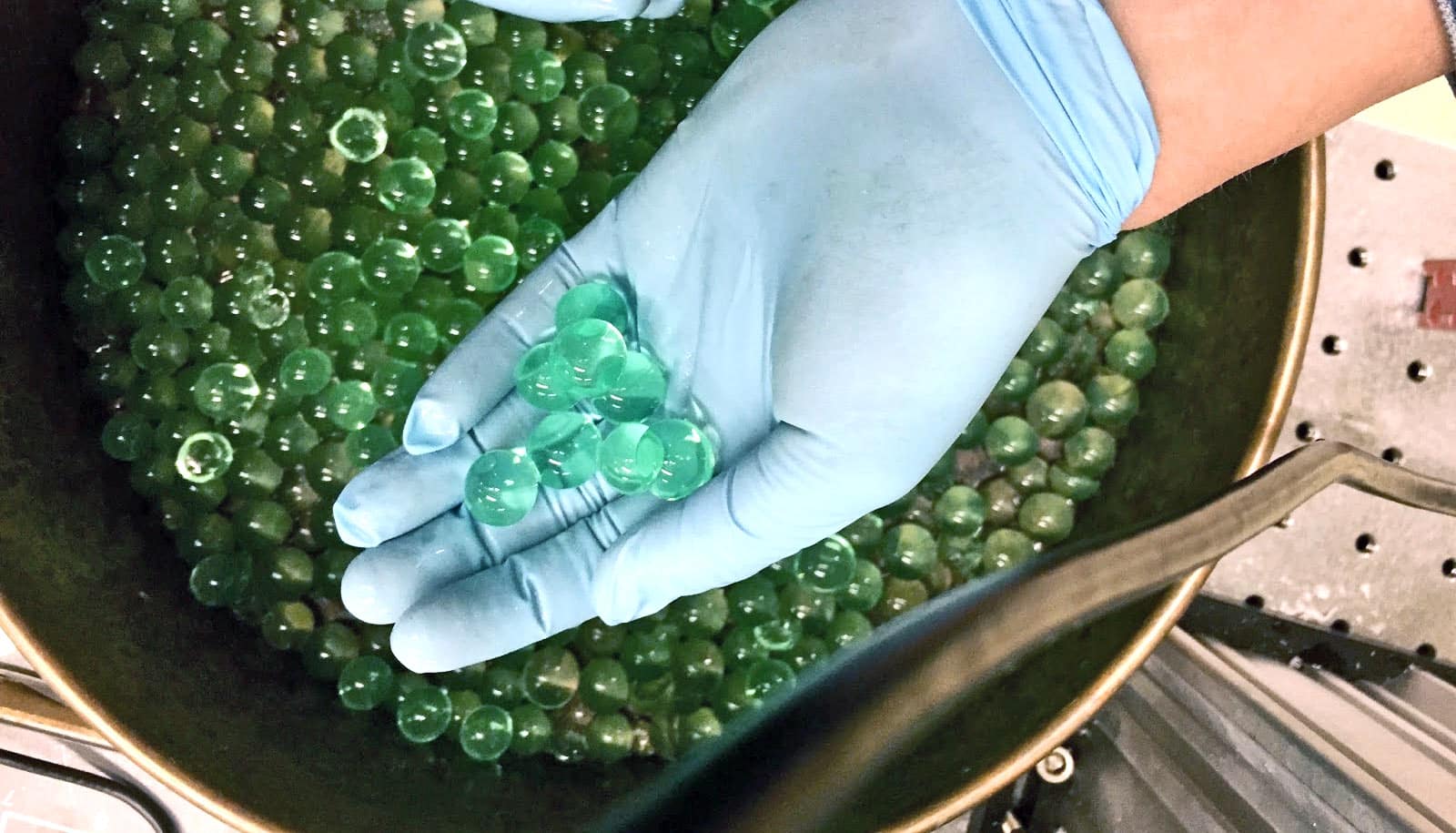New research explains why soft objects are less likely to clog a drain or get stuck while passing through an opening.
“It’s new physics and yet it’s so simple…”
For decades, scientists have studied how groups of solid objects—everything from falling grains of sand to a rushing crowd of panicked people—can get stuck as they try to pass through a small opening.
The classic result is known as “faster is slower.” When the objects flow out, if an arch of the objects forms across the opening, then a large pressure can stabilize the arch and cause a clog.
The new research, however, shows that the opposite is true for soft particles. When soft particles feel a larger pressure, they squish together and the arch breaks, so clogging is less likely.
Soft, squishy, and simple
“We’ve quantified the clogging dynamics of soft objects for the first time and identified the parameters that seem to explain why it’s completely opposite physics to that of hard objects,” says Eric Weeks, a physics professor at Emory University whose lab conducted the research. “One surprising result is that, while friction is often suspected to be important for arch formation, our particles are frictionless and yet still form arches.”
Questions about how clogs form have implications for everything from improving highway design and the flow of traffic to avoiding jam-ups of people fleeing a burning building.
The dynamics of soft objects that the Weeks lab investigated could give insights into biological processes such as the flow of cells, bacteria, and other “squishy” particles through blood vessels.
“Hydrogels have interesting properties and that makes them fun to work with…”
“It’s new physics and yet it’s so simple,” Weeks says. “We used tools such as a basic physics formula from 1882 and some cheap hydrogel balls that we ordered from Amazon.”
Weeks, who specializes in the study of soft condensed materials, became intrigued by the growing number of studies on how solid objects clog. It sounds counterintuitive—after a rush of solid particles through an opening forms an arch, greater pressure behind them solidifies that arch. But the process appears to work similarly to a keystone arch in architecture: The pressure from the weight of stones above presses the stones in the arch below more firmly together.
Weeks and his students decided to explore the process of soft-particle clogging. Graduate students Xia Hong and Meghan Kohne worked on experiments involving tiny oil droplets and then computer simulations.
Motivated by those preliminary results, Haoran Wang, a student in the Weeks lab, conducted early experiments with the marble-sized, water-filled hydrogel balls. They are sometimes called plant balls since they are commonly used to hold up stems in flower vases.
Wang built a two-dimensional, Plexiglas hopper that allowed gravity to pull the hydrogel balls down through two triangular wedges that researchers could adjust in width to change the size of the opening between them.
Stuck on hydrogels
Mia Morrell, a sophomore at Emory, continued the work when she joined the Weeks lab last year.
“I loved doing the hydrogel experiments because it’s really hands-on—not just sitting at a desk,” Morrell says, adding that the project also required her to learn how to become handy with a drill and a laser cutter.
The hydrogel balls start out as deflated polymer husks. They are left in a tray of water until they swell up into squishy, slippery, plastic spheres that feel almost like living tissue.
“Hydrogels have interesting properties and that makes them fun to work with,” Morrell says. “You can learn a lot from them because they provide a simple model for physics, kind of like fruit flies do for biology.”
Morrell loaded the hydrogels into the two-dimensional hopper. She tilted the hopper to vary the effects of gravity and checked to see if the particles would clog as they flowed through it. This process meant reloading the hopper more than 400 times to investigate different conditions.
This branch of physics explains why ketchup’s hard to pour
The Hertzian force law, an 1882 formula by Heinrich Hertz, allowed the researchers to measure the displacement and compression force of individual hydrogel spheres and compare the hydrogel results with the oil droplet experiments and the computer simulations. The comparison showed that these different systems all have the same physical behavior, apparently universal to soft particles.
“We quantified the dynamics of soft particles in a two-dimensional environment under the influence of gravity and what happens when you present them with an obstacle,” Morrell says. “What we learned from this single system may have many broader applications.”
The researchers report their findings in the journal Physical Review E.
Source: Emory University



